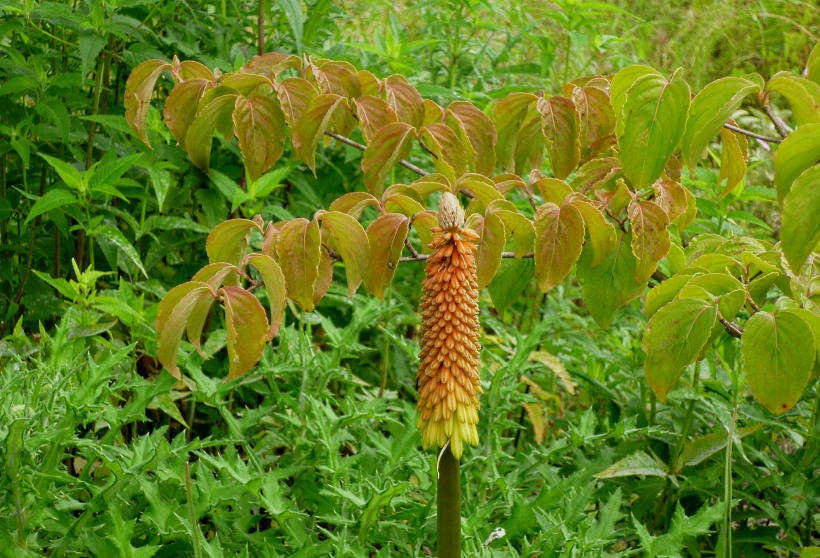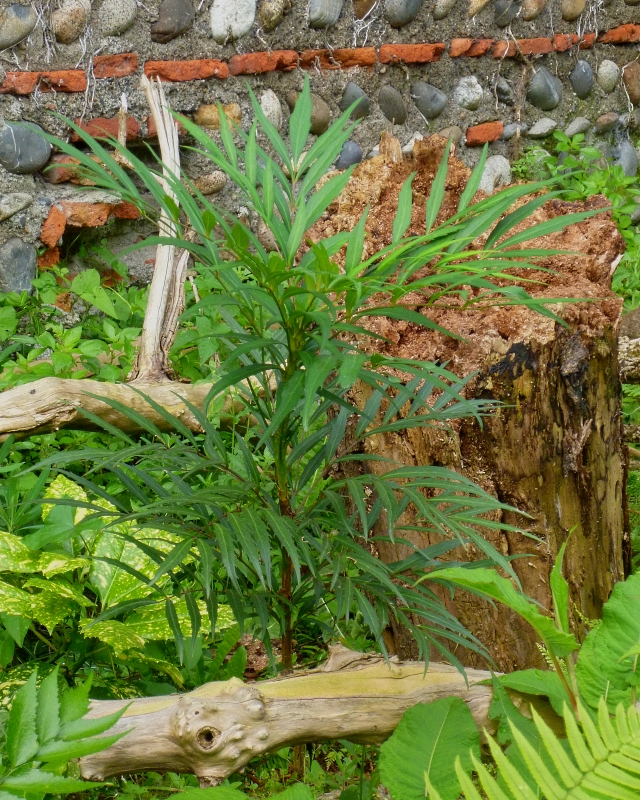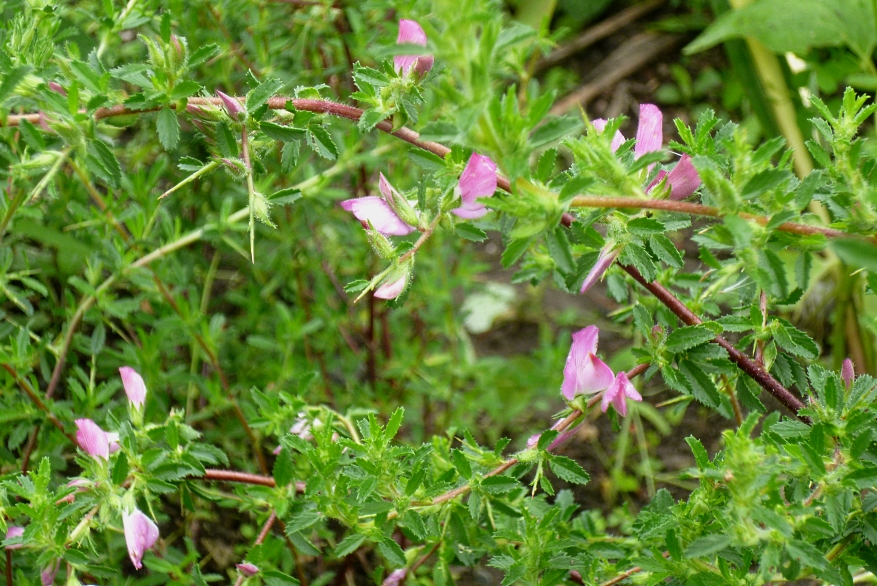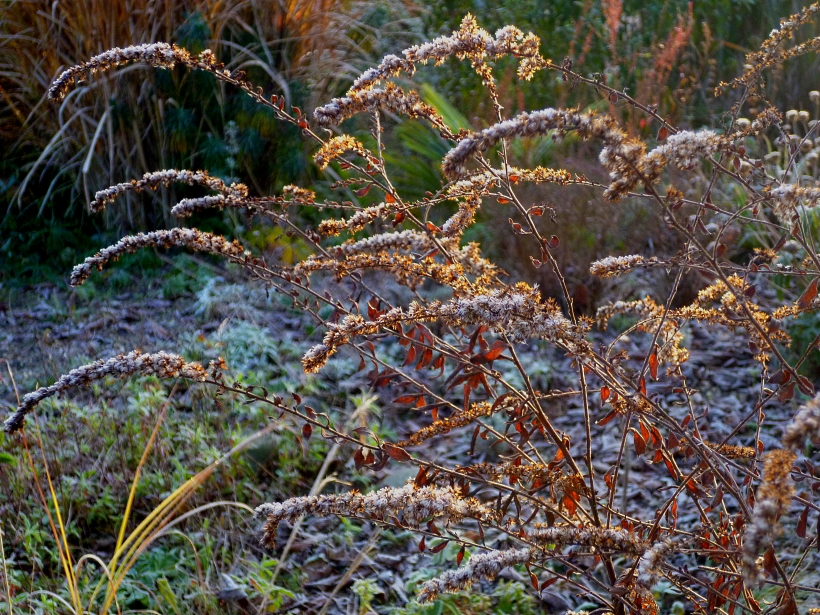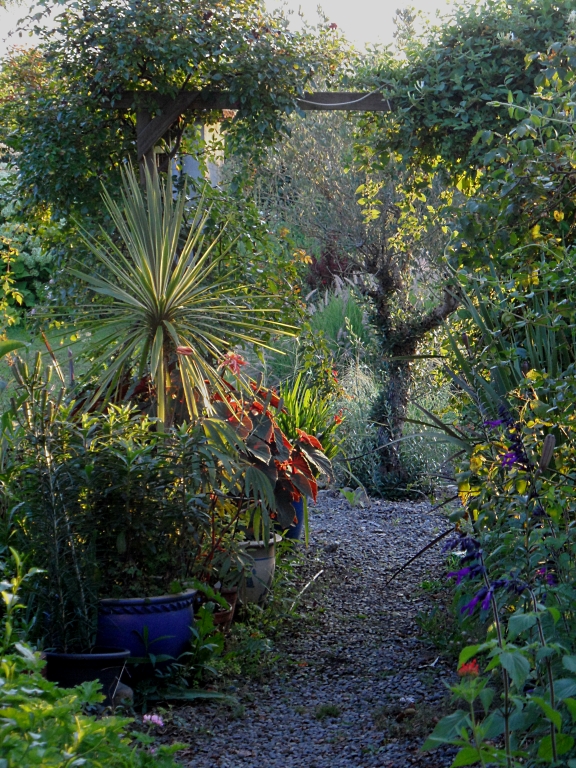This week has been the week of the ‘June canicule’- in other words, serious heat. We have been lucky, half of the hot days have started with misty, damp mornings and we have not gone over 40C. Today, Sunday, it will cool back to the late 20s, which will be perfect. The misty mornings have been a relief and are rather magical, giving the garden a bit of respite from the overpowering sun.

I love this dahlia- I only have two, but this is one of them, Dahlia ‘Verrone’s Obsidian’. The name is amazing, and so is the flower with furled dark blue/grey petals surrounding a brilliant golden centre. The first year, probably the bulbs were too tiny, produced nothing, but this year, the 3rd, the plant is getting into a swing with generous foliage and lots of buds. I didn’t take it in in the winter, I just left it in the pot and took my chances. Lucky me.
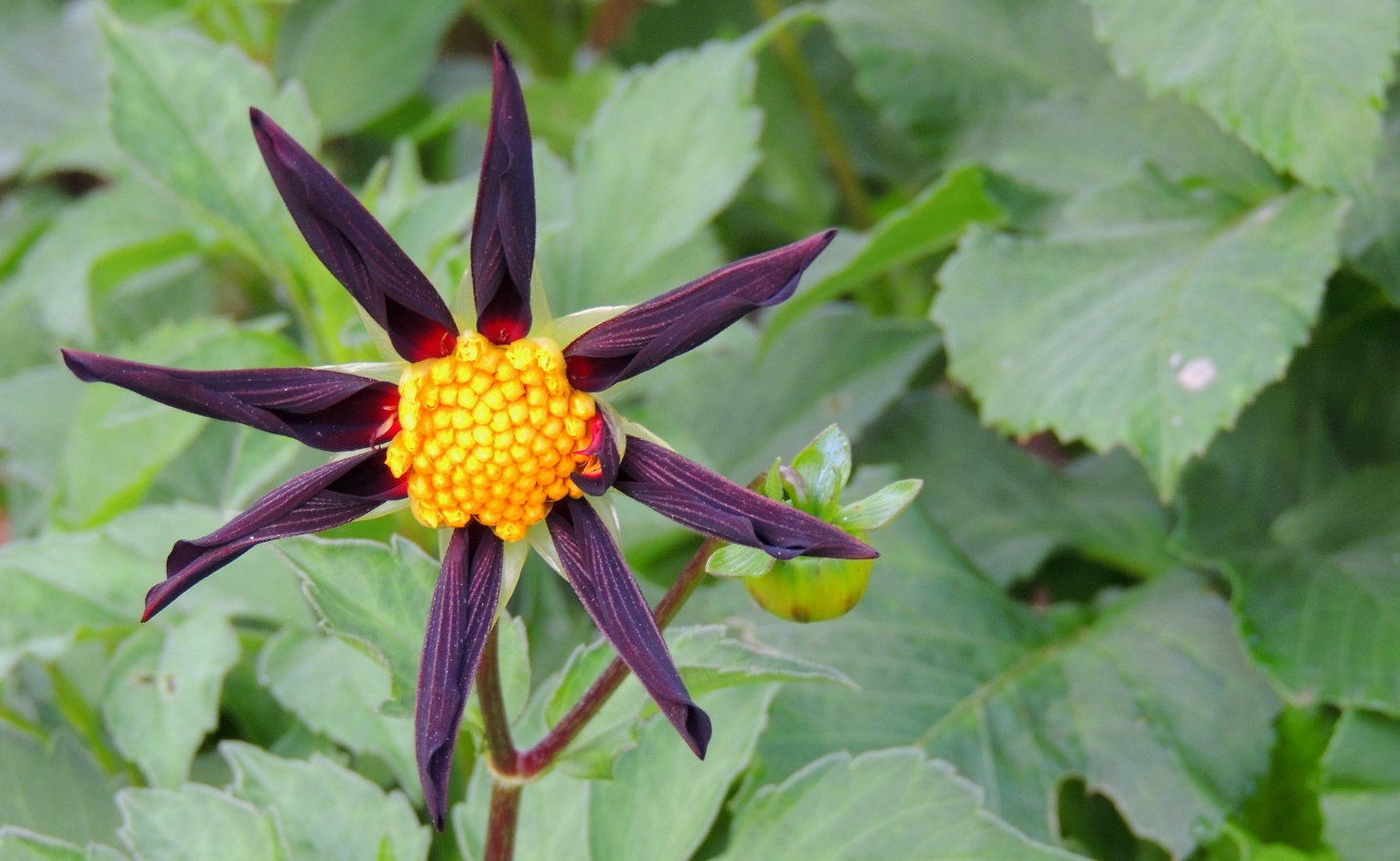

The dew has been heavy and luxurious, almost like a small shower of rain. The bronze fennel catches the dew beautifully and shines with each droplet.

The dew and damp has brought out the summer spiders, creating their connections between plants, and draping some, like the Echinops sphaerocephalus ‘Arctic Glow’ above. This is a plant that pleases more by it’s vigour and form than by the often short-lived flowerheads, but the darkly outlined cut leaves are present for a long time and work like fake thistles in the garden.

Romneya coulteri is a plant with a tremendous capacity for life- as long as you plant it where it wants to be- in full sun, poor soil and don’t even think about watering it. But if you move it, it will turn up it’s toes and die- best to buy a small plant, a baby, and then let it grow in situ. It will take a year or two to flower, but then you will have beautiful glaucous greeny-blue foliage and these colossal chiffon flowers like the best Spanish fried egg, crinkly and delicious. It is a bit of a thug, hence why people do try and move them, me included. What will happen if you are lucky is that a piece will stubbornly refuse to be dug up, and next year you can start again with a new baby plant sitting where it wants to be. Give it space, or pin it back with another tough shrub, and all will be well.

This is a really fabulous Salvia, ‘Ton Ter Linden’. It is a deep purply-red, not quite captured above, and has a drapey habit, so that it could almost be called a tumbling salvia. I picked it out at our local nursery, the wonderful Bernard Lacrouts, mainly for the habit and the deep, dark colour. It is a newish variety, bred in the Netherlands, and named for the famous artist and gardener, Ton Ter Linden. He led the way, along with Henk Gerritsen and Piet Oudolf, towards a more naturalistic style of perennial planting that is loosely called the Dutch New Wave. Another garden on the list….

In the same colour band is my almost favourite Sanguisorba, ‘Cangshan Cranberry’– and the moment when the flowerheads fill up with colour is one of my most anticipated summer moments. I don’t have it in the best place, as the massive banana behind it decks it with water when we have heavy rain, but it is the only place where it will be happy- so there we are. At nearly 1.5m it is a tall plant, but wispy and wavy, and takes a few years to bulk up- but all worth the wait. Dan Hinkley found this plant in Yunnan, China in 1996. I am so glad that he did.

I love this workhorse plant. Every summer, I feel bound to try and increase the fan club membership for Telekia speciosa, as it is such a good reliable plant, and virtually unknown next to the more famous contender in the big-yellow-daisy stakes, Inula magnifica.

Another new Salvia! Salvia cacaliifolia has charming, triangular-shaped leaves and the bluest of blue branching flower spikes- curiously, it has no Salvia smell about it either. New to me, so I can’t offer much in the way of experience, but I am really enjoying it. It likes a little shade, but other than that, is not demanding.
Cephalaria gigantea, which has been a lovely surprise this June, has found the last week too hard for it, so it is fading fast. Celebrate it with a last photograph after early morning spider activity.

Another reason to be happy is another surprise development. A stunningly successful germination rate 3 years ago of Rudbeckia occidentalis ‘Green Wizard’ led to rather boastful behaviour on my part- and thence to the punishment of my hubris by the total failure of all the plants to re-appear in the Spring. Aha! Four small plants must have been hanging on in there, as this week up they popped. I am so pleased. My friend EBee will also be delighted. I adore the chocolate flower head and the golden ruff- magnificent, though not necessarily in a floral way.






